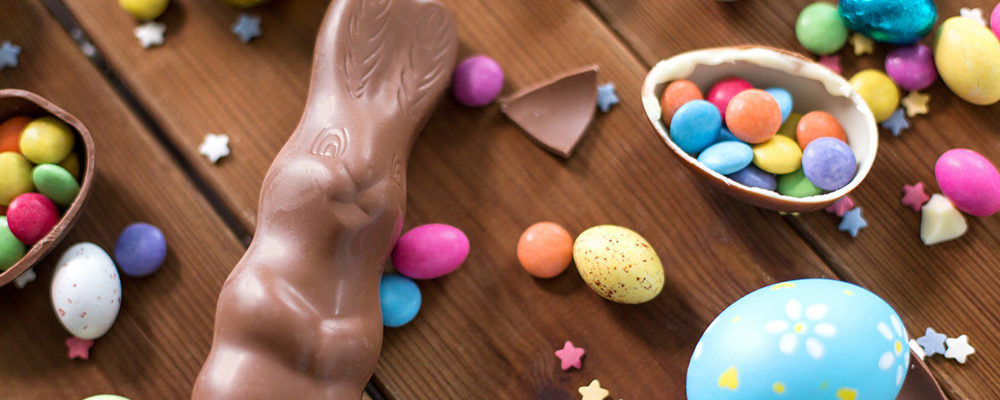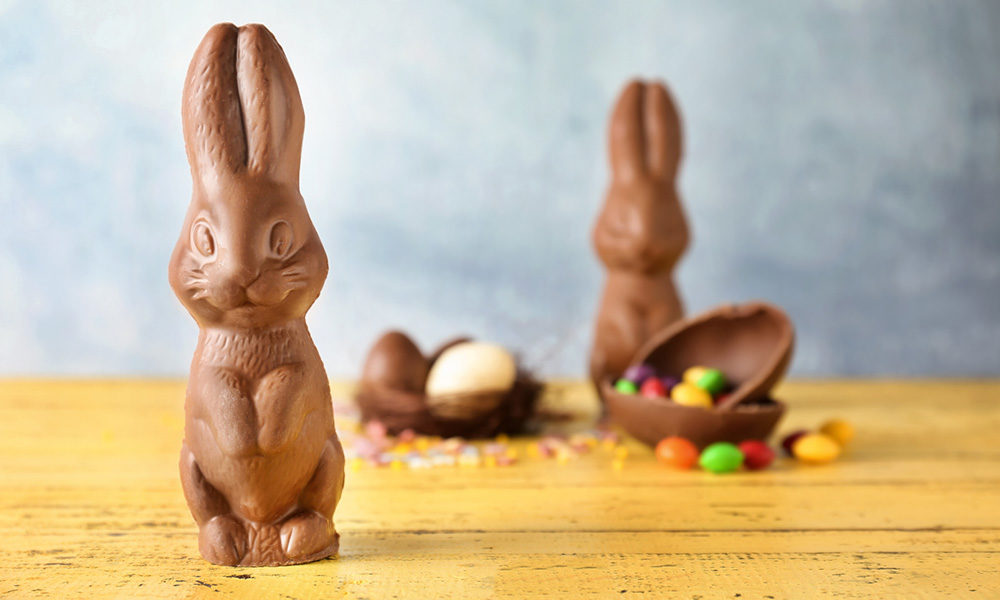Let the egg tapping, egg rolling, and egg hunting begin! On second thought: All in favor of foregoing the activities and diving straight into the Easter treats, say “Aye!” (“Aye!”)
Easter is one of the most popular candy holidays in the world, and, no doubt, the candy is all part of the traditions; it has been for more than 150 years. You’d probably win a round of Easter candy trivia if you remember that before it was known as the Cadbury Crème Egg, this seasonal treat was called the Fry’s Crème Egg. There are only a few more days to buy the gooey-on-the-inside, chocolate-on-the-outside candy that has been a staple of Easter egg hunts and indulgences since 1963. But, blink, and they’ll be gone, 500 million eggs produced each year, de-foiled and chomped in only the first four months of the year.

In the 1980s, Cadbury tried to make the egg-shaped chocolates available year-round, but there may have been some confusion, at the time, between Nancy Reagan’s Just Say No campaign and the obsession with the crème eggs. The market refused to be lured into over egg-dulgence, sales dropped, and Cadbury returned to seasonal availability for the treat that sits alongside another sugary supermarket beacon of an approaching Easter: the brighter-than-nature-intended Peep!
What about Peeps?
Can you believe that Peeps, those neon-coated marshmallow treats, used to take 27 hours to make? But those confectionary chicks learned to multiply in 1954 when they started to cluck their way across the assembly line every six minutes. The flock has now expanded to more than 1.5 billion each year, flying into the mouths and stomachs of eager Peep-aholics. To be sure, the emphatically sweet Peeps have both their detractors and their champions. Still, some will say you haven’t lived until you’ve eaten a chocolate sunflower cake with yellow Peeps petals.
Of course, no Easter basket would be complete without a few bunnies. But beware the bunny with the sparkling eyes — of diamonds. The world’s most expensive chocolate bunny, valued at $49,000, sported two 1.7 carat round diamonds and took two-and-a-half 16-hour days to carve and piece together to reach its 1 foot 3 inches stature. Three solid chocolate eggs wrapped in gold leaf, laid at the feet of the bunny, helped push the price up of this lifelike statue, as did the 75% Tanzania chocolate. That’s 11 pounds and 584,000 calories of solid bunny! Enough for the whole family and then some.
The Start of Hollow Bunnies
We can still appreciate the humble, happy chocolate bunny when the gold dust settles. Hollow bunnies got their start in the 19th century. They became popular after World War II, when former soldier Richard Palmer decided to start massively producing them, based on the practice which started in Germany. Americans haven’t looked back. We now consume more than 91 million chocolate bunnies each Easter holiday.
Although there are various stories about Easter bunnies laying eggs, it is no mystery that the decorating of Easter eggs came from the Ukrainian tradition known as pysanka, which comes from the verb “to write.” The tradition dates back centuries and came to the United States with the arrival of Ukrainian immigrants.
Have a Happy Easter
This Easter, whether you’re one of the majority who prefers milk chocolate or in the minority who prefers dark chocolate, find a basket and fill it with your favorite Easter treats. Then dress up your bonnet, dress up in your bonnet, and prepare to sing out in a rousing chorus of Irving Berlin’s 1933 holiday classic, Easter Bonnet. You know it’s the right thing to do.


